#susanna east
Text

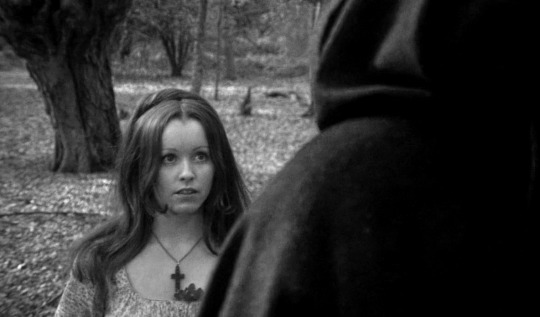




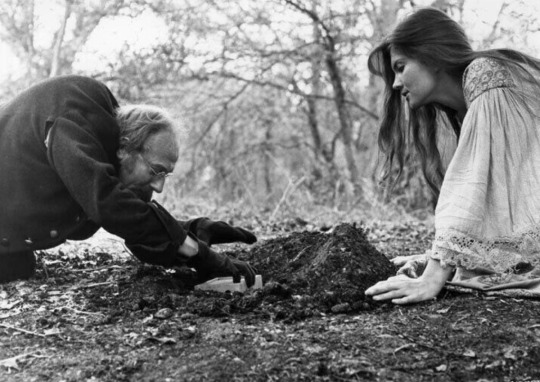

Captain Kronos: Vampire Hunter (1974)
#captain kronos: vampire hunter#horst janson#caroline munro#john cater#lois daine#susanna east#1974#1970s movies#brian clemens#hammer horror#hammer films
76 notes
·
View notes
Text




Emma, puertas oscuras AKA Emma, Dark Doors (1974), Directed by José Ramón Larraz.
#emma puertas oscuras#emma dark doors#horror movies#josé ramón larraz#70s movies#spanish horror#cult film#grindhouse#slasher#psychological horror#thriller#giallo#spanish cinema#70s horror#independent film#cult horror#psychological thriller#susanna east#obscure horror#horror#obscure movies#exploitation film#1974#vintage#film still
15 notes
·
View notes
Text



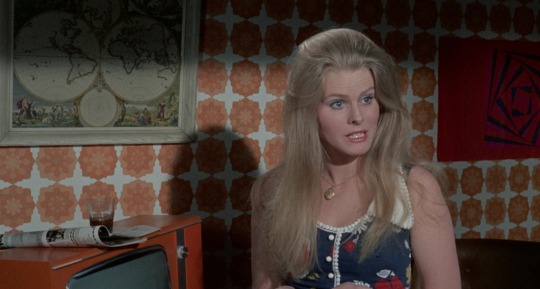



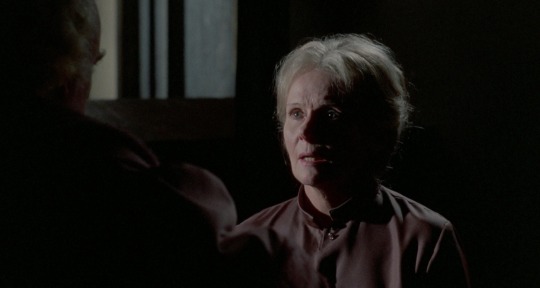
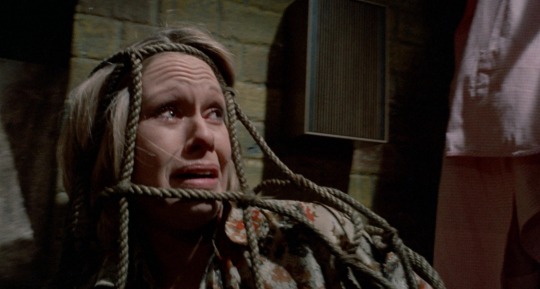

The Fiend (Beware My Brethren, 1972)
"Say your sins aloud. He needs to hear them."
"I can't... please don't make me, please don't make me?"
"Say them. Say them!"
#the fiend#beware my brethren#horror film#british cinema#1972#robert hartford davis#brian comport#tony beckley#ann todd#patrick magee#madeleine hinde#suzanna leigh#david lodge#percy herbert#ronald allen#maxine barrie#jeannette wild#diana chappell#susanna east#hani borelle#bill mitchell#i caught a tv showing of this (a cut version) as a teen but it's been frustratingly hard to find in the uk p much since release so I'm#grateful to 88 films for cleaning it up and giving it a fancy blu ray release. a curio from the brit horror pantheon‚ its stronger emphasis#on sex‚ violence and sexually motivated violence mark it as a harder‚ nastier version of the form; a stepping stone between the same#director's own Corruption in the late 60s and the indie work of Pete Walker and Norm Warren later in the 70s. in amongst the sadism and the#misogyny are some truly interesting ideas‚ as Tony Beckley's personal manias and psychoses are contrasted with the fanaticism of the xtian#religious order he's grudgingly affiliated with. plays on some subtle homoerotic themes and there's a hefty dose of anti police sentiment#but the real coup was casting Beckley and Beckett muse Pat Magee; both are magnetic‚ in very different performances#also of note is the improbably boppy christian rock gospel soundtrack (best used in horribly ironic fashion as Beckley stalks and kills)#the final image of the film is both quite spectacular and instantly explains why the film fell foul of the censors on original release
7 notes
·
View notes
Photo
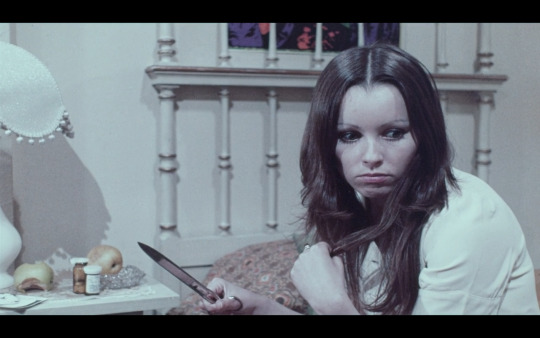

Susanna East in José Ramón Larraz’s Emma, Dark Doors (1974)
8 notes
·
View notes
Text




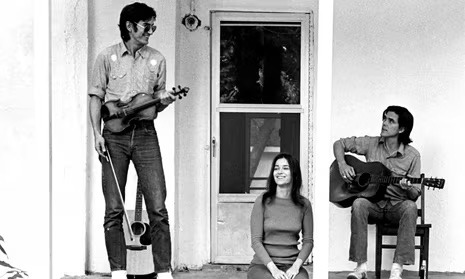

Townes Van Zandt rehearsing at the home of Susanna and Guy Clark with Daniel Antopolsky in 1972, East Nashville, Tennessee
23 notes
·
View notes
Text
Ten Books to Know Me:
@chubsthehamster put out a "participate if you want to" call, and I fucking love books, so why not!
1. Johnathan Strange and Mr. Norrell, by Susanna Clarke - Read this first in high school and it rewired my brain. Dense, intricate, a November day of a book, it is about the inequities of class, race, gender, and also about the dry stone wall down the lane and its intimacy with the ivy that's grown over it for the last century. There are magicians and academic confrontations.
2. Food in England, by Dorothy Hartley - Read this a year out of undergrad. This is the book that convinced me that I could actually do something worthwhile with my interest in history. It was also fundamental in kicking a few chunks out of my ivory tower, but that's probably a personal take-away rather than anything essential to the book. Learn a few hundred small practicalities that may or may not be applicable to modern life; you decide.
3. Sabriel, by Garth Nix - The first book that spoke to baby's latent goth tendencies. The worldbuilding still lives in the back of my head. Made me interested in WWI history. Read it in middle school, I think? It was such a breath of fresh air, and I admired the protagonist and her self-discipline and self-reliance so much. Probably the first book that made me really worry whether the characters would survive until the end, and boy howdy was that formative. Zombies, quests to save fathers, learning that the legacy you thought was a burden is actually your calling.
4. Ombria in Shadow, by Patricia A. McKillip - Read in undergrad, I think? I reread it a couple times a year. It's a go-to story for when I need something comforting and decadent. I love the gauzy quality of the worldbuilding, the understated approach to very real-world dangers. A royal bastard, a former royal mistress, and a sorceress' apprentice race to protect a child king and save the and the living soul of a city.
5. The Sandman, by Neil Gaiman, et al. - This story got me through my late teens and early twenties. Exactly the right flavor of tragedy to grab my brain and shake it like a maraca; fundamentally changed how I look at stories and narratives. Person-shaped cosmic mechanism denies personhood, falls face first into the hole he's been digging for himself for a billion years, hitting every consequence on the way down, and finds a morsel of peace at the end.
6. Strange Tales from a Chinese Studio (聊齋誌異), by Pu Songling (蒲松齡) - I read this first while doing research for a fanfic and came away hungry for every bit of "classic" Chinese literature in English translation I could find. I've always had a fondness for supernatural anecdotes (The Fairy Faith in Celtic Countries, by WB Yeats, etc), but this is on the list because it was the initial experience in an ongoing foray into classic and modern East and Southeast Asian literature.
7. Underland, by Robert Macfarlane - Read this a couple years ago. Everything you ever and never wanted to know about caves and being under the earth. The texture of Macfarlane's prose is unlike anything else, and he spends 500 pages leading you in and out of the dark.
8. Night Watch, by Terry Pratchett - This is my compromise instead of just listing every Terry Pratchett book. I read this when I was 12, and I mean it in earnest when I say it shaped how I think to this day. Pratchett's work is a load-bearing beam in my brain. Another grey book, but also lilac.
9. A People's History of the United States, by Howard Zinn - Okay look, LOOK, I know what you're thinking, but I read this when I was a teenager living in an extremely conservative pocket of a very liberal state. It made me think, which I was good at avoiding because school came easy to me and I usually didn't have to engage my brain at all to have the right answers. I wish with all my heart that I could write to the teacher who assigned it, because it was the very first time anyone had ever made me read history outside a history textbook. I resented that man so much at the time, but I owe him my current career.
10. Stiff, by Mary Roach - Read this as a teen and finally got answers about death I hadn't gotten in a lifetime of religious education. I think I actually snuck it into Mass, because I have a distinct memory of cramming it between the cushion and arm of a pew. Sparked an interest in death and human remains that lead me closer to where I am today.
Please consider yourself tagged if you'd like to participate! And tag me back so I can add more books to my tbr list, please! <3
54 notes
·
View notes
Text
Personhood and Genre Fiction | My 2024 Reading Journey So Far
I’ve been working as a Library Assistant for six months now, and boy has it been a massive jolt to my love of reading. It’s hard not to be excited about digging into a book when you’re surrounded by them all day, and I credit that feeling with being responsible for my reading more books for pleasure in the first four months of 2024 than I have in the previous seven years combined. As I reach a modest milestone in my reading for the year, I wanted to reflect on what I’ve observed to be a common theme among the books that have most captured my imagination since January. With the world having been in a particularly fraught state over the last few years, and an increasingly prevalent trend of groups of people being actively dehumanised by those with power and influence, it’s been quite an emotional experience for me to discover that the books which have most captured my imagination this year have been about personhood and what defines it.
Piranesi by Susanna Clarke (2020)

The first book I finished this year is one that I think about every day. Susanna Clarke’s Piranesi is a wonderful little novel about who we are at different times, and crucially different places, in our lives. It explores personhood through the lens of fundamental internal change; when we go through seismic changes, do we become different people or are we fundamentally the same?
Clarke uses magical realism and a meticulously well-designed alternate reality/dream world as a means of exploring the evolution of one’s own personhood, as well as an adoration of design, architecture, and place. Piranesi was invigorating for me as a reassurance that it’s okay to redefine oneself at different points in life, and that just because you’re a different person now, that doesn’t mean that the old you ceases to exist.
Feet of Clay by Terry Pratchett (1996)

Terry Pratchett is so well known for being a satirist, that it’s east to forget how sincere and moving his work can be. After putting it off for many years, I finally started reading the Discworld books this year, and have been enjoying them immensely, and while I had a great time with the first two books in the City Watch sub-series, it wasn’t until the third entry that one of them really hit me, emotionally.
Feet of Clay is about golems (גּוֹלֶם). For those unfamiliar with Jewish folklore, golems are anthropomorphic clay constructs ordered to obey the commands of their master and animated via the inscription of the Hebrew word for truth on its head. Pratchett’s golems are slightly different in that they are brought to life by placing governing words inside their heads. Pratchett uses this to remarkable effect to build a story of self-ownership and self-determination. It was especially moving to me to see Jewishness used in this way – as something empowering rather than grotesque, which is a real rarity in Western fantasy writing.
A Closed and Common Orbit by Becky Chambers (2016)

The last book I wanted to talk about here was this second entry in Becky Chambers’ beautifully humane, space opera anthology, The Wayfarers series. A Closed and Common Orbit centres on two protagonists, one an AI learning to adapt to a life passing as a human in an illegal ‘body kit’, and the other a clone, bred for factory work, trying to help the AI make a life for herself.
As with her first book, The Long Way to a Small Angry Planet, what characterises Chambers’ writing is her deep love for her characters, and the way that love manifests itself in this book is nothing short of miraculous. Sidra and Pepper’s parallel journeys are not merely about convincing others of their personhood, but rather convincing themselves. A Closed and Common Orbit is about finding a way of living where you feel most like yourself, learning to feel that you deserve for your needs to be met, and accepting that your loved ones see you as a person, even in times when you don’t.
All of these books have meant a great deal to me during a time where I have had to completely re-evaluate the ways in which I see myself. Genre fiction is not necessarily where I expected to find this feeling of personhood and recognition, but it’s especially exciting to have done so. There’s nothing quite like finding deep meaning in something you have engaged with purely for entertainment, and I hope to continue to do so as the year goes on.
#blusforjews#books#booklr#becky chambers#the long way to a small angry planet#wayfarer#nonbinary#getting back into reading#a closed and common orbit#terry pratchett#discworld#feet of clay#ankh morpork city watch#susanna clarke#piranesi#magical realism#fantasy#scifi#space opera#jewishness#jewish
6 notes
·
View notes
Text
Introducing The Wissmanns!
Sorry It Took So Long. Part 1 of 2.

Duggar Data has been tracking the Wissmanns’ Data for quite awhile, and they have officially been a Predictor Family since October 2021. Despite this, I have failed to do a proper Introductory Post... Until now!
Just ahead in Part 1...
Who are the Wissmanns? Where are they from? How many children do they have? How many of their children are married or in relationships? What can you tell me about their specific beliefs or quirks?
Tell Me About Mr. + Mrs. Wissmann.
Headed by Loren Albert + Gloria Ann (Hager) Wissmann, the Wissmann Family hails from Milford, Seward County, NE. Loren owns Wissmann Enterprises—a contracting and roofing company, specializing in “roof coatings,” sandblasting and painting, and excavation at industrial sites and farms. As of 2022, several of the Wissmann Sons—namely Matthias, Stephen, and Nathanael—work with Loren in the family business.
Loren + Gloria married on August 16, 1980, when he was 23, and she was 21. (His DOB is May 15, 1957. Hers is June 6, 1958.) They went on to have a big family—13 Children (8 Daughters, 5 Sons), with no multiple births.
What Are Their Children’s Names / DOBs?
Here’s the full list of names and DOBs, all verified via voter rolls and Nebraska Birth Records—
Rachel Ann (Wissmann) Busenitz January 31, 1982
Ruth Elissa (Wissmann) Bourlier August 16, 1983
Josiah David Wissmann February 23, 1985
Bethany Lynne (Wissmann) Beasley July 10, 1986
Andrew Michael Wissmann February 29, 1988 (Leap Day)
Elizabeth Joy Wissmann September 21, 1989
Matthias Meinert Wissmann June 18, 1991
Stephen Gerald Wissmann July 15, 1993
Hannah Marlys (Wissmann) Duggar June 23, 1995
Susanna Evelyn Wissmann March 7, 1997
Alaythia Gloria Wissmann October 22, 1999
Nathanael Loren Wissmann October 28, 2001
Charissa Marie Wissmann September 25, 2006
Gloria had her Final Child, Charissa, at Age 48.30, giving her 8 Daughters the Latest Fertility Cut–Off of any Predictor Family.
All of the 2nd Generation Wissmanns, except Charissa (#13), are adults. (Her 18th Birthday isn’t until September 25, 2024.) So far, 7 of 13 are married, and an 8th (Nathanael, #12) is in a relationship. All of the married couples—except the newlyweds, Hannah (#9) + Jeremiah—are also parents.
What Church Do The Wissmanns Attend?
According to Free Jinger, the Wissmann Family was once affiliated with Millard Alliance Church (MAC) in Omaha, Nebraska. The Wissmann Family Statement of Faith, posted on their website, strongly substantiates this; it’s identical to the MAC Statement of Faith. Duggar Data also dug up this really old newsletter, in which Andrew Wissmann, then unmarried, is listed as a member of MAC.
However, it appears that the Wissmanns don’t attend MAC anymore. (Unclear when they left.) They are now members of East Fairview Mennonite Church, in Milford, Nebraska. Loren, Matthias, and Stephen all seem to be pretty high up in the church—leading services and bible studies, etc. ��Church bulletins dating back to February 2016 mention various other Wissmanns, as well.
Are The Wissmanns Quiverfull (QF)?
Yes, Loren + Gloria are absolutely quiverfull (QF). Evidence of this is right on their family website, where Loren + Gloria say—
The Lord used Psalms 127 to open [our] hearts to welcoming children, and Proverbs 22:6 to the awesome responsibility of training the children He would send.
Psalm 127:3–5 is a dog whistle for the QF Movement... It’s their favorite piece of scripture, and the verse that gives the movement its name. It reads—
Lo, children are an heritage of the Lord: and the fruit of the womb is his reward. As arrows are in the hand of a mighty man; so are children of the youth. Happy is the man that hath his quiver full of them....
The Wissmanns also reference Proverbs 22:6, which is another popular Bible verse among the fundamentalist evangelical crowd. It’s the verse about how parents must “train up” their children. (“Train up a child in the way he should go: and when he is old, he will not depart from it.”)
So, yeah... Whether they identify as such or not—and, they probably don’t—Loren + Gloria Wissmann embrace the QF Movement’s core tenets. And, the 2nd Generation Wissmanns aren’t far behind... Rachel frequently tags her IG Posts w/ “#raisingarrows,” for example, and Bethany has posted some pretty quiverfull–y quotes. Also, Ruth recently expressed—“Every birth is a miracle. Every baby a gift.”
Do They Homeschool? Are They IBLP / ATI?
The Wissmanns claim not to be part of IBLP / ATI—but, they do homeschool. (See Also.) (Unclear what curriculum they used.) The 2nd Generation is also homeschooling; Rachel + Alan, Josiah + Abi, and Bethany + Dan are the only ones w/ school age aged children, and they all teach their children at home.
Tell Me A Little More About Their Beliefs.
Modesty. Clearly, it’s important to them, and they prefer that women to wear skirts. They’re not strictly “skirts only,” though. (Gloria doesn’t seem to wear pants, but all of her daughters—including those still living at home—do.) One of the Wissmann In–Laws (Kori) wore a sleeveless wedding dress... Gasp!
Gender Roles. Unfortunately, they’re pretty heavy into gender essentialism... Ruth promotes “healthy femininity” via IG, for example, and posts all sorts of ‘gender matters’ nonsense. (See Also.) Also, Bethany vowed in her wedding vows to “submit to” her husband. There are some glimmers of hope, though—e.g., Susanna Wissmann was allowed to become a pilot.
Courtship. As for relationships, the Wissmanns practice “courtship,” more or less, but don’t seem to call it that. (Ruth referred to “dating” her husband, at one point.) Some of the things they do are a bit courtship–y, though. Rachel and Ruth got engaged within weeks of meeting their husbands, for example, and Rachel waited until engagement to say “I love you.” They don’t seem to kiss until the altar, either.
Are They Friendly w/ Other Predictor Families?
Yes! The Wissmanns are old friends of the Duggars, and are also friendly with fellow Midwestern fundies, the Bontragers (and Bowerses).
Next Up... Part 2 will focus on the 2nd Generation Wissmann Couples.
57 notes
·
View notes
Text


Day 10: Soil
[Transcript:]
Delivered August 5th, 1926
From: Betty Winters
127 Old River Rd.
New Heart Bay, Maine, 04682
To: Susanna Perkins
Deliver to Susanna Perkins’s house
Dearest Susanna Perkins -(STOP)-
Found records of missing people. Found their names on the census from two years back. All worked at Farwell Manor at some point in time. Housekeepers, maids, coach drivers, all types of staff. None with notable families. Some with no family at all. I think the Farwells are worth looking at a little closer. -(STOP)-
Visited the house. No one was home. Something came up from the ground. It struggled to move much further from where it emerged, like it was part of the dirt. It tried to reach out toward me. Looked like it had been rotting in the ground for weeks. I ran away as fast as I could. -(STOP)-
Come visit my home. We need to discuss it in more detail. Let no one see you come in. -(STOP)-
--Betty Winters
Susanna Perkins,
275 East Ivy Street
New Heart Bay, Maine, 04682
[Prompt List]
[Previous] - Day 9: Calcified
[Next] - Day 11: Venom
#my art#digital art#apoctober#apoctober 2023#apoctober day 10#horror art#horror#body horror#tw: body horror#gore#tw: gore#unreality#tw: unreality#arg#alternate reality game#New Heart Bay#New Heart Historical Society#art timelapse#halloween 2023
4 notes
·
View notes
Text
Every time I do Blood on the Ice, it gets buggier and buggier, to the point that I can't even do it anymore. I'm not looking forward to my new saves going to WindHelm.
Last time it happened, Calixto was inside his MASTER LOCKED house/museum so I couldn't sell him the amulet. Ofc I could just proceed as normal with the quest but then the amulet won't become the strange amulet and it will be stuck in my inventory for all eternity. Also Calixto has been acting up and killing people in broad daylight.
On all new saves after my Stalleo-Io save where I couldn't proceed with the quest and characters who haven't been to WindHelm, I'm avoiding that city and the area surrounding it like the plague. Problem is, even if you don't enter the city and go to Brandy-Mug farm outside, the docks or stables, it still counts as a visit to the city and it makes things more difficult. Plus, if I want to fully complete the White Phial quest, I have to go to the city atleast four times; once to get it, second to bring it back, third to talk to Quintus after he sends his letter and fourth to finally fix it and Nurelion dies in peace. ALSO if I want to do Theives Guild stuff, that's a whole lot more visits to the city, five jobs and one special job.
The graveyard scene is supposed to trigger from 7pm-7am, but it has triggered in the daytime as well so I can't even only go to the city during the day to avoid starting the quest.
PLUS there's also Rise in the East, convince Tolbjorn to give the Argonians better wages, Northern Maiden to Solstheim and back (you can't fast travel to anywhere on Skyrim from Solstheim, it forces you back to the docks of WindHelm), Muiri's DBH contract on the sister, Itchy Scales double distilled skooma quest (he has a habit of not showing up every time I go there, one time I broke into their assemblage and got the quest like that), Shavee's Amulet retrieval, BlackSmiths guy's Queen Freydis' sword, FangTusk bounty, basically alot of quests that involve leaving the city and coming back. I think even going on the docks, going in the city and going back on the docks still counts as each individual visit, so just gettin the Argonians better wages is 3 visits. Not to mention sometimes NPCs won't give me their quests when I talk to them. Octieve San and Noster Eagle-Eye in Solitude won't give me their quests as well as the BlackSmith in WindHelm also won't always give me the sword quest when I first talk to him, the option isn't there. There's also Adanto who wants you to deliver a book to Solitude and he sometimes doesn't give me the quest. Luckily you don't have to come back to him. There are a few quests that can be taken care of inside the city but there are many more that can't.
Even if I condense everything into as minimal visits as possible, Rise in the East and going to Solstheim and back are still gonna fuck me up and put me over the four visits.
I'm doing the quest according to the detailed walk through of UESP to the T, talking to NPCs and retreiving items in the exact order listed in the walkthrou. Tova is still alive (I do the DBH after Blood on the Ice), high elf stable hand lady is still alive, not going to Hjerm until needed, talking to guards and Jorleif, talking to Wulferf the Unliving instead of having him jailed, TRYIN to sell the amulet to Calixto before talkikg to Viola Gordiano, but the game keeps messing shit up for me.
At this point the only real solution is to pick the Imperial side in the war so the guard never has a chance to give me the quest. I'm not sure thou if this will entirely get rid of the quest or if it just 'stunts it', Susanna the Wicked still gets killed, Calixto still locks himself inside his house but no more people die atleast. But now I'll have this permanent quest on my log.
#Skyrim#Elder Scrolls#Elder Scrolls V#tes#tesv#I deleted my Leif save who was going to be a StormCloak#and buy Hjerm cause none of my saves can buy it#never done the war yet#but if I cant even do Blood on the Ice I cant buy Hjerm#I deleted it cause I wanted to redo it#but if I ever do it again he wont be able to live in Hjerm
3 notes
·
View notes
Text
Phillis Wheatley: The Unsung Black Poet Who Shaped the US
She is believed to be the first enslaved person and first African American to publish a book of poetry. She also forced the US to reckon with slavery's hypocrisy.
— Rediscovering America | Black History | New England | USA | North America | Tuesday February 21st, 2023 | By Robin Catalano

(Image credit: Paul Matzner/Alamy)
When the Dartmouth sliced through the frigid waters of Boston Harbor on 28 November 1773, the Quaker-owned whaler carried a cargo that included 114 chests of British East India Company tea. Eighteen days later, the tea, along with 228 additional trunks from the soon-to-arrive Beaverand Eleanor, would play a starring role in the US Colonies' most iconic act of resistance, which ultimately led to the Revolutionary War.
In the Dartmouth's hold was another precious cargo: freshly printed copies of Poems on Various Subjects, Religious and Moral, a collection by Phillis Wheatley, the first enslaved person, first African American woman and third female in the US colonies to publish a book of poetry. Her life and work would become emblematic of the US struggle for freedom, a tale whose most visible representation – the Boston Tea Party, when American colonists protested Britain's "taxation without representation" by dumping tea into the harbour – celebrates its 250th anniversary this year.
Evan O'Brien, creative manager of the Boston Tea Party & Ships Museum, said, "Our mission, especially this year, is to talk not just about the individuals who were onboard the vessels, destroying the tea, but everyone who lived in Boston in 1773, including Phillis Wheatley."

Poems on Various Subjects, Religious and Moral is believed to be the first book of published poetry by an enslaved person in the US (Credit: SBS Eclectic Images/Alamy)
Actor Cathryn Philippe, who interprets Wheatley at the museum, connected with the poet's remarkable accomplishments. "You often hear about the tragedy of enslavement, which is a part of history that needs to be understood. But we don't hear much about the joy or successes of enslaved or formerly enslaved Africans."
Wheatley was born in what is now Senegal or Gambia and was abducted in 1761 when she was just seven or eight years old. Forced, along with 94 other Africans, aboard the slave-trading brigantine Phillis, she survived the treacherous Middle Passage, which claimed the lives of nearly two million enslaved people – including a quarter of the Phillis' "cargo" – over a 360-year period, and arrived on Boston's shores that summer.
“We Shouldn't Hesitate To Call Her A Genius”
Frail after eight weeks at sea, the girl caught the attention of wealthy merchant and tailor John Wheatley. He purchased the child as a gift for his wife, Susanna, and renamed her after the vessel that had spirited her away from her home.
Phillis showed a natural aptitude for language. David Waldstreicher, professor of history at the City University of New York and author of the forthcoming biography The Odyssey of Phillis Wheatley, said, "She became fluent and culturally literate and able to write poems in English so quickly that we shouldn't hesitate to call her a genius."

Despite Wheatley's connection to the Boston Tea Party, her legacy remains largely unknown (Credit: Robin Catalano)
Although the Wheatleys were not abolitionists (they enslaved several people, and segregated Phillis from them) they recognised Phillis' talents and encouraged her to study Latin, Greek, history, theology and poetry. Inspired by the likes of Alexander Pope and Isaac Watts, she stayed up at night, writing heroic couplets and elegies to notable figures by candlelight. She published her first verse, in the Newport Mercury, at age 13.
While many New Englanders took note of the poet's gifts, no American printer would publish a book by a Black writer. Poems on Various Subjects was eventually financed by Selina Hastings, Countess of Huntingdon, and published in London. As a 19-year-old in 1773, Phillis travelled to the city, escorted by the Wheatleys' son. She was an instant sensation. Her celebrity, along with England's criticism of a new nation that simultaneously subjugated her while comparing its own relationship to the Crown as slavery, led the Wheatleys to manumit her in 1774.
A keen observer, Phillis frequently wrote about significant moments in America's fight for independence, carefully walking a fine line between being overtly political or critical of the colonial government as a Black woman. As a 14-year-old in 1768, she praised King George III in the poem To the King's Most Excellent Majesty for repealing the Stamp Act. Two years later, in On the Death of Mr. Snider Murder'd by Richardson, she memorialised the killing of 12-year-old Christopher Snider by a Massachusetts-born Loyalist during a protest over imported British goods.
Soon after, in 1770, a skirmish between Colonists and British soldiers erupted in front of the Old State House, not far from where Phillis lived on King Street, culminating in the Boston Massacre. Today, a circle of granite pavers, its bronze letters dulled by age and thousands of footsteps, marks the spot where blood was spilled. Following the incident, Phillis was inspired to write the poem On the Affray in King Street, on the Evening of the 5th of March, 1770.

The Boston Massacre took place near Phillis' residence (Credit: Ian Dagnall Computing/Alamy)
Scholars estimate that Phillis produced upwards of 100 poems. Because her work makes few references to her own condition and is often couched in Christian concepts and the extolling of popular figures of the day, she has sometimes been dismissed as a white apologist.
Ade Solanke, a writer and Fulbright Scholar whose play Phillis in London will be performed in Boston later this year, said, "I think the biggest misconception about her is that she wasn't an abolitionist. You think of Frederick Douglass, Harriet Tubman, people who were explicitly condemning slavery and going to war against it. But the act of writing poetry as a Black woman in this time period was pretty radical."
Wendy Roberts, a University at Albany professor who recently discovered a lost Wheatley poem in a Quaker commonplace book in Philadelphia, agrees. "I don't think any deep reader of Wheatley comes away thinking she's an apologist. She was asserting herself, her agency, her wish for freedom, her presence as a person."
Most buildings in Boston with a direct connection to Phillis' life no longer stand. Some were razed by a pair of fires in the 18th and 19th Centuries, and others have been replaced by urban renewal in the mid-1900s. The Old South Meeting House, a stately Georgian red-brick church built in 1729 and tucked between glass-and-concrete skyscrapers on Washington Street, is an exception. Besides being Phillis's place of worship, it was a cradle of philosophical debate, and served as planning headquarters for the Boston Tea Party. It now operates as a museum, with a statue of the poet flanked by exhibits on other ground-breaking figures from the pre- and post-Revolutionary eras.

The Old South Meeting House where Phillis worshipped is one of the few buildings in Boston that remain with a connection to her life (Credit: Ian Dagnall/Alamy)
The writer almost certainly strolled through 50-acre Boston Common, the country's oldest public park (and site of the newly unveiled, and controversial, statue honouring Civil Rights icons Martin Luther King and Coretta Scott King). Phillis may have conducted the Wheatley family's shopping at Faneuil Hall, once the city's main marketplace for household goods – and located next to where enslaved people were once sold. It's now a retail centre, where visitors can pick up souvenirs, sample a variety of foods, or take a tour with a guide outfitted in 18th-Century breeches, waistcoat and tricorne hat.
Some experts speculate that Phillis participated in funeral processions for Snider and the five victims of the Boston Massacre, in which their coffins were paraded from Faneuil Hall to the Granary Burying Ground – also the final resting place of Revolutionaries like Samuel Adams, John Hancock and Paul Revere. Sombre and quiet, the cemetery bears more than 2,000 slate, greenstone and marble gravestones, many carved with traditional Puritan motifs like blank-eyed death's heads and frowning angels.
Phillis, who died in poverty after developing pneumonia at age 31, is thought to be buried in an unmarked grave, with her deceased newborn child, at Copp's Hill, in Boston's North End neighbourhood. An elegant statue of her, alongside renderings of women's rights advocate Abigail Adams and abolitionist Lucy Stone, holds court over the Commonwealth Avenue Mall. This year, when a replica of the Dartmouth sails into the Boston Tea Party & Ships Museum on Griffin's Wharf, it will host a permanent exhibit on the poet.
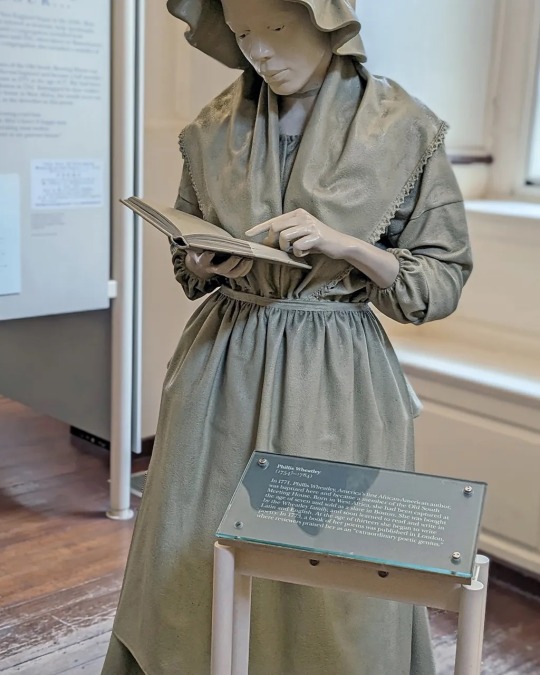
In addition to a statue of Wheatley at the Boston Women's Memorial, a second statue of her is located inside the Old South Meeting House (Credit: Robin Catalano)
Phillis's legacy is perhaps best experienced in the work of contemporary artists. As part of the 250th anniversary celebrations, Revolution 250, a consortium of 70 organisations dedicated to exploring Revolutionary history, will host a variety of performances and exhibits, including a full-scale re-enactment of the Tea Party on 16 December. Several events will honour the poet, among them a photography exhibit by Valerie Anselme, who will recreate Phillis' frontispiece that adorned the original publication of Poems on Various Subjects.
Artist Amanda Shea, who frequently hosts spoken word events and poetry readings around the city, explained that, in many ways, she is carrying on a legacy pioneered so long ago. "I feel like I'm part of the continuum of Phillis Wheatley. It's really important to be able to write and tell our stories. It's our duty as artists to reflect the times in which we live."
3 notes
·
View notes
Text
1740-1769
Continuing my posts of a few decades at a time as I go along.
Previous posts:
17th century
1700-1739
Following posts:
1770-1799
1800-1849
Susanna Hanchett belongs to @desertdollranch and Héloise belongs to @autistickirstenlarson. Mazal and Agnes and Charlotte and Jane are my own. Excited to have some of the canon American Girl characters finally appear!
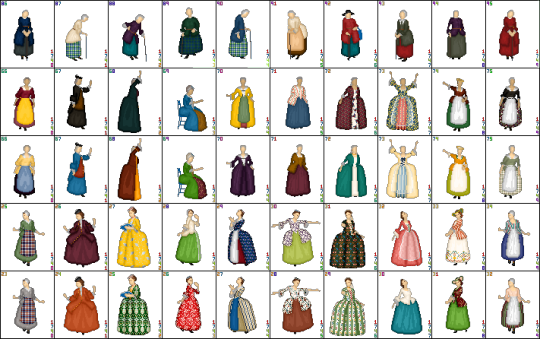
1740s
Susanna Hanchett: 86-95
Mazal Cardozo: 66-75
Agnes Jonker: 66-75
Charlotte Finch: 25-34
Jane Finch: 23-32
Wide panniers are still in fashion, especially for formalwear. Orientalism and pastoralism have visible influences on fashion, particularly in the colorful fabrics and the sheer linen aprons too fine for actual work. The last vestige of the robe battante can be seen in the pleated "sack back" of the robe a la francaise.

1750s
Susanna Hanchett: 96-99
Mazal Cardozo: 76-85
Agnes Jonker: 76-85
Charlotte Finch: 35-44
Jane Finch: 33-42
Héloise Cormier: 0-5
Kaya'aton'my: 0-4
Speaking Rain: 0-4
Reaching the end of Susanna's story was bittersweet. Thank you so much to @desertdollranch for trusting me with Susanna: I hope you enjoyed seeing her grow up and slowly change decade by decade. At the same time, we get to meet Héloise, the first of @autistickirstenlarson's OCs to appear in this project. Learn more about Héloise here.
Kaya and Singing Bird are finally here as well! Kaya's community, the Nimiipuu, are not unaffected by the arrival of Euorpeans on the continent--Kaya's books mention smallpox, horses, and other echoes of European settlement far to the East--but they haven't made formal contact yet, and won't until Louis and Clark make contact with the nations of the Pacific Northwest in 1805. Kaya will be 50 then. For now, she is dressed in the same style buckskin dresses that she will wear throughout her story and probably throughout her life.
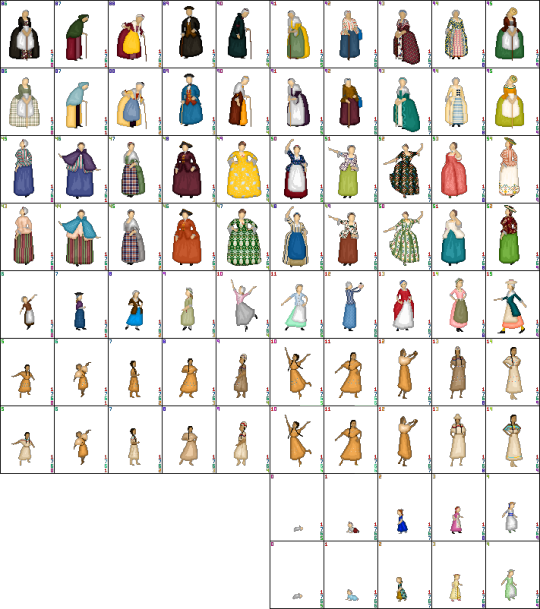
1760s
Mazal Cardozo: 86-95
Agnes Jonker: 86-95
Charlotte Finch: 45-54
Jane Finch: 43-52
Héloise Cormier: 6-15
Kaya'aton'my: 5-14
Speaking Rain: 5-14
Felicity Merriman: 0-4
Elizabeth Cole: 0-4
Felicity and Elizabeth may be an ocean apart for now, but they are dressed in a similar fashion. They both wear "long clothes," plain white gowns that trail below their feet, as infants, and "short clothes," plain white knee-length gowns, as toddlers. After that they are dressed very much like their mothers, with the addition of leading strings, which I have not drawn. We start to see Kaya and Singing Bird's fashions diverge, as Singing Bird begins to spend time with her Salish family as well as her Nimiipuu family of origin.
For the adults, skirt width has reached its most extreme and begun to slim down again. Hairstyles that have been curled tightly around their heads are beginning to get taller, and caraco jackets over petticoats are common casual wear.
#American Girl#Zoominag#Susanna Hanchett#Héloise Cormier#Zoominag OCs by AGblr#Mazal Cardozo#Agnes Jonker#Charlotte Finch#Jane Finch#Zoominag OCs#Kaya'aton'my#Speaking Rain#Felicity Merriman#Elizabeth Cole#Zoominag by decade
10 notes
·
View notes
Text
tagged by @irreplaceable-spark
Relationship Status: married 32 yrs
Favorite Color(s): Forest Green
Favorite Food: my grandmother's Thanksgiving stuffing recipe with sausage and chestnuts
Song Stuck in My Head: The Holly and the Ivy
Last thing you Googled: sine plate (was watching Inheritance Machining)
Time: 9:45 pm
Dream Trip: Germany, all over the British Isles, Sweden, cities and wilderness, mountains and snow, northern lights
Last Thing You Read: Piranesi by Susanna Clarke. A big thank you to all the tumblr peeps who wouldn't shut up about it.
Last Book You Enjoyed Reading: Piranesi was a great joy. I recently took a part-time position at my local library, a job about which everyone I know exclaims, "That's perfect for you!" It is.
I quickly discovered that If I leave a book at the library I may only read it in roughly 5-20 minute increments, rather than taking it home and swallowing it whole in a few hours. This was so. well. suited. to Piranesi's peaceful atmosphere and slow reveal. It took me over a week of marinating in sea water, soothing diction, and delightful uncertainty to come to the right and proper conclusion, which left me hugging the book and letting the feels wash over me in peace.
The only other thing I can compare it to is an obscure book from 1912 called The Night Land, a deeply strange and unsettling, yet ultimately wholesome story. It is hard to read in some ways, but has the same quality of leaving the reader mostly alone with a first person narrator in an environment so alien and evocative that it functions almost as another character. I highly recommend it.
Favorite Thing to Cook/Bake:
Cook: Popovers with Newburg, so easy and so impressive
Bake: Gingerbread House, v. tasty and v. beautiful. Must be completely edible
Favorite Craft to do in Your Freetime: random papercraft, cardmaking, cutting, glitter, embellishing, watercolor, collage. take a bunch of salvaged stuff and stuff I made from scratch and make a Pretty out of it. also, simply drawing from observation is extremely relaxing when there is enough time to get lost in it.
Most Niche Dislike: vinyl siding/windows, plastic flowers/fruit
Opinion on Circuses: big fan of Carousels, Calliopes, and Elephants Close Up
Do You Have Any Sense of Direction: I always know in which direction the ocean is and can work out the rest from there. Though I live on the east coast and have not tested this further west than Chicago.
Tagging @granny-griffin, @queenlucythevaliant, @ellakas, @freenarnian, @incomingalbatross, @ancienthing
2 notes
·
View notes
Text
1882: A Summit of Sisters
“So, my sisters,” Kierstin began quite officially, “I’ve asked you to meet with me today so that we can agree on a plan.”

Lydia and Frances sat with her at the table.
Lydia looked confused. “What do you mean?”
Frances stared down at her lap in shame.
Kierstin sighed. “For Frances and Amy, of course.”
“I’m so sorry!” Frances said for the umpteenth time. “I should be making a plan, but I just don’t know what to do!” She didn’t dare say it, but she feared that Kierstin might insist that she give the baby away. She couldn’t bear the thought.

Kierstin waved away her apologies. “What’s done is done, and now you have to let family help you. We’re sisters, and I’ve told you I will always be there for you. So here’s what I’ve done…”
She explained that she’d already made steps toward a resolution and needed Frances to decide which route to take. Several months earlier, when Frances had first come back home, Kierstin had written two letters. One went to Susanna in Britechester, and the other to Louisa in Newcrest. In the letters she told each sister-in-law that Frances had been recently married to a man named Robert Smith, and in all the hasty preparations to make her new home, she hadn’t taken the time to write to the family back East.
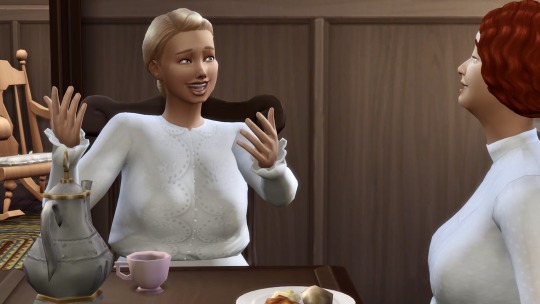
“So now they think you’re Mrs. Smith,” Kierstin explained. “Now that the baby is here, we’ll write again to tell Susanna and Louisa, and we’ll also tell them that your young husband has tragically died. Maybe he had an accident.”
Lydia and Frances both looked confused now.
“We’ll tell them that you want to go back home now, Frances. And we’ll ask if you might move in with them. As far as anyone back East knows, you’re a young widow with a new baby.”
Frances nodded. “But… you lied… for me?”
Lydia scowled. “Really, Kierstin, wouldn’t it have been easier to have Frances give the baby over to you or me and send her back alone?”
Kierstin glared at Lydia. “But then she wouldn’t be with her daughter. I might remind you, Lydia Halvorsen, that you and my brother were married just six months before Alma was born.”
Lydia quickly silenced her protest.
“So… I expect that they’ll both offer to take you in. Would you rather live with Susanna or Louisa? Or perhaps I should ask, would you rather go to Britechester or Newcrest?”
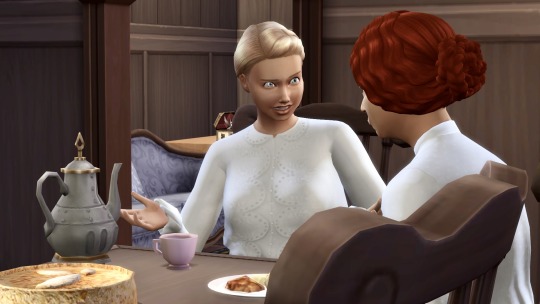
Frances needed a moment to think. Susanna’s children were a bit older, and she could truly start over in Britechester, where no one else knew her. On the other hand, she was closer to Louisa, having lived with her longer, and Newcrest was familiar.
After considering the options, she decided on Britechester.
Just a few weeks later, it was decided that baby Amy was strong enough to make the trip. Mrs. Smith and her little daughter left to start their lives over together.


#sims 4 decades challenge#simblr#sims 4 historical#sims 4#ts4 legacy#the sims#ts4#sims 4 legacy#ts4 gameplay
6 notes
·
View notes
Text

SAINTS OF THE DAY FOR APRIL 22
St. Arwald, 686 A.D. Martyrs, sons of Arwald, the prince of the Isle of Wight, just off the English coast. The martyrs are called Arwald because their proper names are not known. They were slain after Baptism by King Cadwall, who was a pagan.
St. Abdiesus and Companions, Roman Catholic Martyrs of Persia who was caught up in the persecutions conducted by King Shapur II. Records indicate that Abdiesus was accompanied in his martyrdom by Abrosimus, Acepsimus, Azadanes, Azades, Bicor, Mareas, Milles, and a women named Tarbula. Some were Persian courtiers, others priests and bishops. Tarbula was the sister of St. Simeon, and suffered a particularly cruel death by sawing. Feastday April 22
ST. CAIUS, POPE
Caius was born in the Dalmatian city of Salona, to a noble family, possibly related to the emperor Diocletian. He was Pope from 283 to 296, and may have been the uncle of St Susanna. He fought against emerging heresies and gave definitive structure to the lower orders of the episcopate. April 22
ST. SOTER, POPE
Soter was of Greek origin, though born in Fondi, Italy. He reigned as Pope from 166-175. He was attentive to the needs of Christians and the east, and his pontificate was marked by works of charity and care for the poor. He fought against Montanism, and regulated the order of deaconesses. April 22
ST. AGAPETUS I, POPE
The successor of Pope john ii was the archdeacon Agapetus, member of an old Roman family and the son of Gordianus, priest of the titular church of SS. Giovanni e Paolo. He appears to have been the candidate of the party that had supported dioscorus some years before. April 22
Bl. Maria Gabriella Sagheddu, Roman Catholic Trappist Nun. Patron of Ecumenism.Feastday April 22
0 notes
Text
Newspaper Helsingin Sanomat highlighted a contest hosted by the City of Helsinki that's getting university students to redesign Finland's capital city.
The winning proposal, Dallaillen, drove cars out of the urban core, converted unused office space into apartments and imagined a waterfront sauna, labyrinth and canals along the shores of Töölönlahti Bay.
In the place of auto traffic, many roads in the urban core were replaced with winter green houses, covered walkways and art.
The proposal also aimed to improve the city centre's vitality.
The overall goal of the competition was to find a proposal that would increase the number of visitors and time spent in the downtown area.
Students submitted 20 proposals to the competition, which, according to the city, contained many feasible ideas.
Nonstop skiing
How far do you think you could ski in a day? That's what must have been on the minds of ultraskiers Teemu Virtanen and Susanna Ylinen when they attempted to break the 24-hour world records for men and women on Tuesday.
Tabloid Ilta-Sanomat covered the spectacle as Virtanen and Ylinen spent an entire 24 hours circling the Lahti Stadium on skis.
The 56-year-old Virtanen previously held the record, but lost it to Hans Mäenpää who skied a total 472.007 kilometres in a day. It took several attempts for Virtanen to regain the top spot, but on Tuesday he beat out Mäenpää with a new record of 475.88 kilometres.
"I don't think anyone else my age will break that record," Virtanen said after skiing for 24 hours straight.
Ylinen beat the old record of 375.564 kilometres set by Anni Angeria in 2018 with a new women's world record of 388.78 kilometres.
Grey, but mild, weekend forecast
On Wednesday tabloid Iltalehti highlighted the weather for the rest of the week, forecasting more snow, rain and grey skies across the country.
"On Thursday afternoon, there will be scattered showers and drizzle in the south, with snow in the east, Kainuu and the north-east. In the evening, the weather will clear up and become clearer in the west and north of the country," Foreca meteorologist Kristian Roine told IL.
Friday will also likely be filled with precipitation, Roine said.
During the weekend though, at least in the south and west, conditions will be cloudy with the sun popping out in some areas.
"Temperatures are currently forecast to rise to well above five degrees Celsius in sunny areas, and in some southern areas nearly ten degrees. Areas in the north with precipitation will stay around zero," Roine forecast.
1 note
·
View note